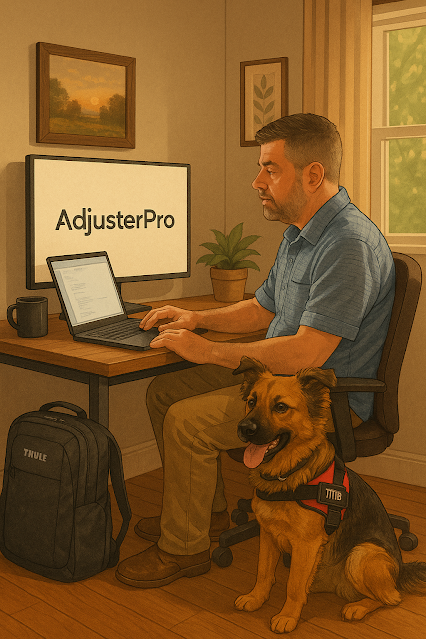Get That license- The homeowners section: HO-HO-NO
Wrong.
This section came at me like a raccoon in an attic: fast, confusing, and full of things I didn’t expect.
First off, they throw all these HO forms at you—HO-2, HO-3, HO-4, HO-5, HO-6, HO-8—like you’re supposed to know what they mean. I felt like I was trying to order Chinese takeout and forgot my reading glasses.
HO-3 is the “special form,” HO-5 is the “comprehensive form,” HO-6 is for condo people who still want to feel special, and HO-8 is for the house your grandma lives in that was built during the Civil War.
The forms blur together after a while, but I started assigning personalities to them just to stay sane. HO-2 is the overprotective neighbor who only covers named perils and checks your garbage cans for raccoons. HO-5 is the cool cousin who just says, “Don’t worry, I got it.” HO-4 is for renters, aka people who haven’t yet learned the pain of replacing a hot water heater with their own money.
And then came the dreaded Coverage A through F breakdown:
-
Coverage A – Dwelling: Your house. Easy.
-
Coverage B – Other Structures: Your shed, detached garage, or the tiny house your Wife's Nephew is “temporarily” living in.
-
Coverage C – Personal Property: Everything you own, including the decorative sword collection you don’t talk about.
-
Coverage D – Loss of Use: When your house becomes a raccoon hotel and you have to live in a motel with floral curtains.
-
Coverage E – Personal Liability: When your dog “accidentally” bites the neighbor who deserved it.
-
Coverage F – Medical Payments to Others: Because someone always manages to trip over your garden gnome.
About halfway through the section, I found myself deeply invested in whether or not a hypothetical fallen tree would be covered if it hit only the neighbor’s trampoline but bounced onto your fence. What if your neighbor had collected rent from the squirrel who lived in the tree? I started saying things like “open peril versus named peril” in regular conversation. My wife asked me if I was okay. I wasn’t.
To be honest, it’s not that the section was hard. It just felt hard because every example seemed normal until it wasn’t:
“Jimmy has a fire. Jimmy’s house is destroyed. Jimmy’s policy excludes arson committed by Jimmy’s raccoon-obsessed uncle who was also living in the basement without a lease.”
Wait—what?
But hey, I got through it. I now know that if your neighbor’s flaming drone crashes into your screened-in porch, it might actually be covered, depending on your form, endorsements, and the alignment of Mercury in retrograde.
So here's to homeowners insurance—where you protect your castle, your toaster, and your inflatable pool slide, all in one weirdly complicated bundle.
Adjust Accordingly,
Nate
P.S. If you’re currently studying the HO-3 form and wondering why the “open perils” list sounds like a list of biblical plagues, just hang in there. You’ll get through it. Or you’ll dream about Coverage C like I did. Either way.





Comments
Post a Comment